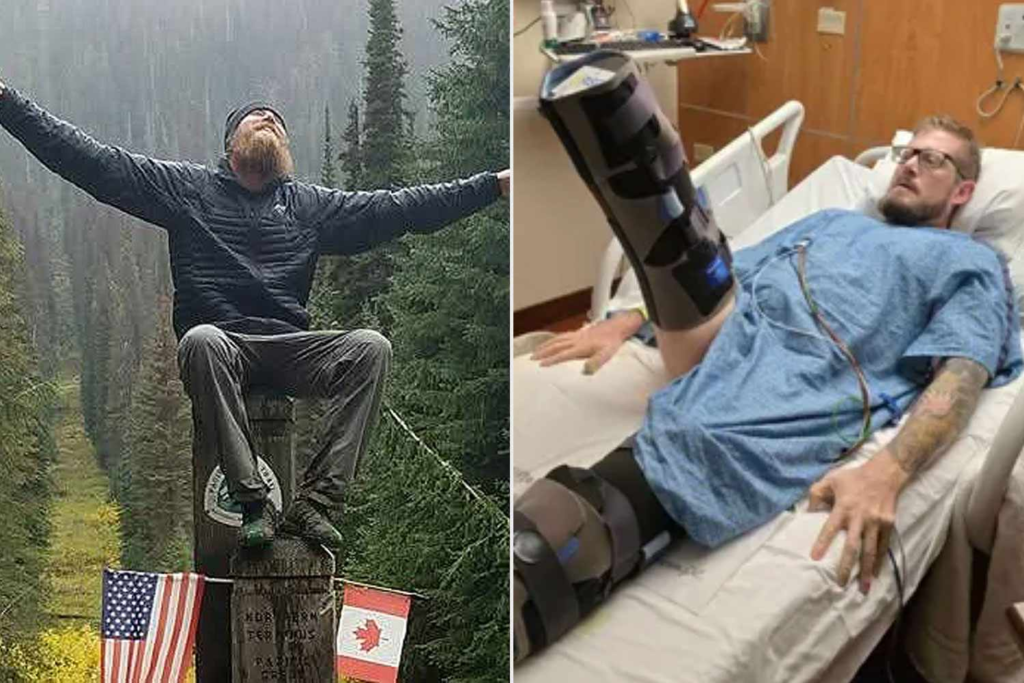Burn injuries are common and often dismissed as minor incidents. However, for Max Armstrong from San Diego, what seemed like a simple burn on his thumb turned into a life-altering medical crisis. His story is a stark reminder of how infections can escalate rapidly and cause devastating consequences.
In December 2024, during a camping trip with friends, Max burned his thumb while cooking pasta, an injury he initially ignored. Little did he know that this minor wound would soon lead to a severe bacterial infection, toxic shock syndrome, and ultimately, the amputation of both his legs.
The Initial Injury and Signs of Infection
Max Armstrong, an outdoor enthusiast, was enjoying a camping trip when the incident occurred. While cooking pasta for dinner, he accidentally burned his right-hand thumb on a skillet.
Like many people would, he brushed off the injury, cleaned the burn, applied antibiotic cream, and bandaged it, assuming it would heal on its own. However, things took a dangerous turn within a few days.
Instead of healing, the burn remained inflamed and showed no signs of improvement. At the same time, Max began experiencing unusual symptoms. His legs started to swell, and his toenails turned purple—a warning sign of poor circulation and potential infection.
Despite this, he continued to endure the discomfort, not realizing the gravity of the situation. It wasn’t until he started “talking crazy” in his sleep that he recognized something was seriously wrong.
Read :17-Year-Old Chinese Badminton Player Dies of Cardiac Arrest During Championship Match: Watch
By the time he reached the emergency room, his condition had worsened dramatically. His eyes began rolling back in his head, a sign of sepsis—a severe, life-threatening reaction to infection. Doctors acted swiftly to diagnose and treat him, but the situation had already escalated beyond expectation.
The Rapid Progression to Toxic Shock Syndrome
Upon medical examination, doctors discovered that the burn on Max’s thumb had been infected with Group A Streptococcus (Strep A) bacteria. This common bacterium can cause mild infections like strep throat, but in rare cases, it can lead to severe complications such as sepsis and toxic shock syndrome. Unfortunately, Max Armstrong fell into the latter category.
Sepsis occurs when the body’s response to infection causes widespread inflammation, leading to tissue damage, organ failure, and in severe cases, death. As his condition deteriorated, doctors had no choice but to place him in a medically induced coma to prevent further damage and give his body a chance to recover.

Meanwhile, his family was given the devastating news that his body was essentially “eating itself.” The infection had spread rapidly, cutting off circulation to his lower limbs. His feet turned black, a sign of necrosis (tissue death), leaving doctors with no option but to consider amputation.
Max Armstrong remained unconscious as his medical team fought to stabilize him. Toxic shock syndrome, a rare but life-threatening complication caused by bacterial toxins, had taken hold.
This condition can lead to a sudden drop in blood pressure, organ failure, and even death if not treated immediately. His doctors warned his family to prepare for the worst. They were unsure if he would survive the ordeal.
The Life-Changing Decision to Amputate
Against the odds, Max Armstrong woke up from his coma, but the sight that greeted him was horrifying—his feet were completely black and lifeless. The doctors explained that the infection had destroyed the tissues beyond repair. The only way to save his life was to amputate both legs below the knees.
At first, Max refused to accept the decision. He couldn’t fathom the idea of losing his legs. “No, there’s no way they’re taking my feet,” he recalled saying. However, reality soon set in during physical therapy.
Attempting to stand and walk was agonizing, and he realized that keeping his legs would only cause unbearable pain and complications. The choice was clear, though painful—he had to let go of his legs to move forward with his life.
The three-hour operation was a defining moment in his journey. His lower legs were amputated, and he began the long process of rehabilitation.

After spending over a month in the hospital, Max Armstrong was finally discharged, ready to face life with new challenges. He had to learn how to navigate the world in a wheelchair and come to terms with his new reality.
Despite the traumatic experience, Max Armstrong chose to view his journey through a spiritual lens. He embraced the hardships as part of his growth and transformation. “It was not something that I wanted to do, but I knew that it had to be done,” he said.
Reflecting on the events, he admitted that he never imagined such a simple burn could escalate into a life-altering medical emergency. His love for the outdoors had led him into situations where minor injuries were common, but this time, fate had different plans. The camping trip that was meant to be an enjoyable getaway turned into a nightmare that changed his life forever.
Max Armstrong’s story serves as a chilling reminder of how infections can spiral out of control if left untreated. His case highlights the importance of taking even minor injuries seriously, recognizing signs of infection, and seeking medical help when symptoms worsen.
Though his journey has been incredibly challenging, Max Armstrong remains determined to move forward, adapting to his new life and inspiring others with his resilience.
let’s enjoy few years on earth with peace and happiness….✍🏼🙏

